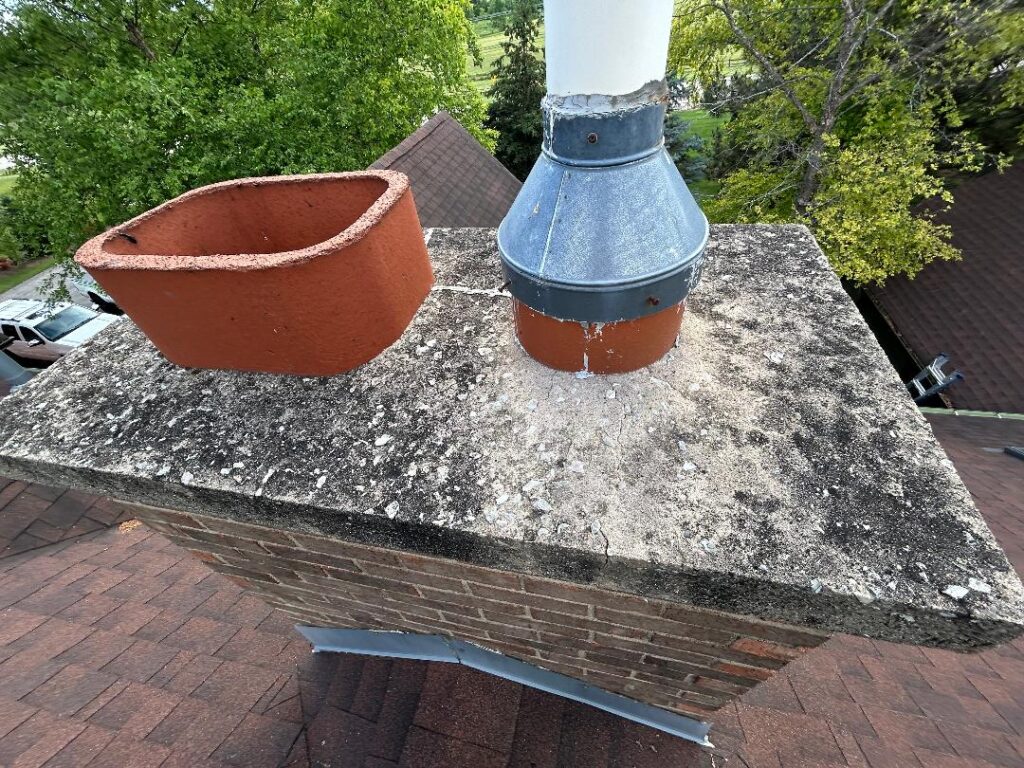Why a Chimney Cap Isn’t Optional—It’s Essential

Why do some homes have weird metal things on top of their chimneys and some don’t? What are they? What do they do? Some are nice and shinny, others are clay or made of Jimmy’s old license plates? These, minus the license plates are chimney caps!
In this blog, we’ll cover why chimney caps are important, their purpose and when to call in the professionals.
Your chimney cap is the first line of defense against everything that doesn’t belong inside your chimney. We’re talking about rain, snow, birds, raccoons, debris, and yes even sparks. But we still see homes all over Chicagoland with missing or broken caps. Wither they were never installed, blown off or disappeared with that one guy who said he knew what he was doing but didn’t, this is a problem. So let’s break down why a proper chimney cap is one of the most important (and affordable) parts of your chimney system.
Here’s what a chimney cap actually does:
- Keeps Water Out: Water is the #1 enemy of masonry. A chimney without a cap is like a house without a roof. Moisture causes bricks to crumble, chimneys to fall apart and metal components to rust.
- Stops Animals from Moving In: Birds, squirrels, raccoons, and even bees love an uncapped flue. And once they’re in? Good luck. It gets messy—and dangerous.
- Helps Prevent Downdrafts: Wind gusts blowing into your flue can push smoke, soot, and cold air back into your home. A good cap helps minimize that.
- Prevents Sparks from Escaping: Some caps are designed with spark arrestors, which reduce the risk of rooftop fires when you burn.
The right cap for the Job
Not all caps are created equal. Some chimneys need custom-fitted caps, especially multi-flue systems. Some are designed to only accommodate liners, some use outside airflow to help your flue draft better, some stop cold air from drafting down your chimney and some are decorative. A bad or generic cap can cause more harm than good and we see that all the time. They are known to rust, have cheap metals that fall apart easily, use improper mounting methods that can lead to flue degradation, the list goes on.
Final Words:
If your chimney doesn’t have a cap—or it’s rusted, loose, or the wrong type—it’s time for an upgrade. A good chimney cap protects your home, saves you money, and keeps your chimney healthy year-round.
Contact us today because at BrickHaus Chimney the little things make the biggest difference. Lets get the right cap on your chimney today!
